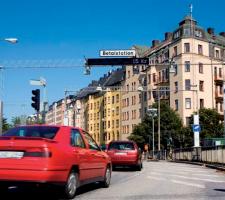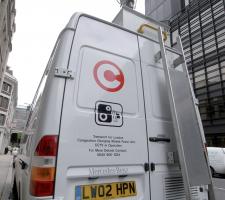
Electronic tolling systems have
been in use for decades now. Worldwide, steadily more and more tolling
systems are being set into operation, providing efficient means for
traffic regulation and financing of infrastructure. But despite this
maturity enforcement is still not being given the consideration it
deserves.
As the use of ETC became more widespread, some actors started to develop more intricate solutions for toll collection. Examples are fees which vary with the time of day, free passage for a period of time following the first passage, special discounts for selected user groups and so on. This seems like a very natural development, as the technology provides ready access to new use cases and one should believe that such ETC schemes could evolve into extremely adaptive, flexible and widespread solutions covering entire nations. So how can we see this proceed further? First, let us review the basic foundation of any toll collection system, be it a road user charging solution or a congestion charging solution. The simple rule is: "I define the following rules that you need to adhere to and in case you do not comply with these rules, I will enforce the rules." From this, we can conclude that any ETC solution comprises two basic elements: an identification process that ensures that the system owner knows which rules apply to the customers encompassed by the system; and an enforcement process ensuring that a violator will have to pay (and often pay a bit more than the original fee).
As technology has developed, new actors have appeared with new solutions for identifying the liability for payment. The use of an OnBoard Unit (OBU) to identify a car through the use of a roadside reader is a well-known concept, as is the concept of identifying the car through an automatic readout of the license number plate (Automatic Number Plate Recognition, or ANPR). With the availability of GPS/GNSS there came the use of satellite navigation as a principle to determine liability for toll fee payment. All these technologies do work and each of them offers particular advantages over the others with respect to investment cost, operational cost and functionality. In many cases however, the focus has remained strictly on the cost of the identification system. The fact that these rules also need to be enforced and the cost to establish and operate the enforcement system has been ignored or at least not sufficiently considered.
Infrastructure for enforcement
A traditional tolling system based on OBUs and readers supplied with video cameras to cater for identification of non-equipped users already has the infrastructure needed to enforce the rules. Any non-compliant behaviour will cause a video image to be captured and the enforcement process can be initiated on the basis of the photographic evidence. The same applies for an ANPR system, where video is the sole method of identification. The choice between ANPR-only or a combination of a DSRC tag and ANPR is most often made on the basis of traffic composition and the legislation related to the use of video images.In a GPS/GNSS-based system, however, the idea is to eliminate the need for infrastructure as the OBU itself can determine if the vehicle is driving in a tolled zone. Now that is fine, but in order for the system to work the driver must perceive of a risk of being discovered should he or she choose not to comply with the rules of the system. This means that a certain amount of infrastructure must in any case be built, operated and maintained to ensure that there is a real risk of being penalised. That infrastructure happens to be identical to the infrastructure needed to build a conventional DSRC/ANPR or ANPR-only system, so as the number of enforcement points increases, the economical advantage of using GPS/GNSS rapidly vanishes. Add to that the significantly higher cost for the vehicle equipment used in GPS/GNSS schemes and it becomes evident that such schemes are only viable for selected use cases, like truck tolling. In cases where the number of tolled zones is very high and the number of vehicles involved is comparatively low, the use of GPS/GNSS-based tolling is efficient.
So what is the equilibrium we need to achieve with respect to enforcement? It is quite clear that if the real risk of being discovered multiplied with the penalty per offence is lower than the actual cost for compliant behaviour, the operator will see a massive leakage of income from the system.
As an example, if the fee is e5, the risk of being discovered is 5 per cent and the fee is e50, many drivers will choose not to pay because the statistical 'fee' per passage resulting from penalties will be only e2.50. That can of course be mitigated by increasing the penalty to a higher level but as long as the general public's opinion remains a factor to be addressed there is probably a political limit with respect to the absolute level of a penalty levied on a normal citizen. This is of course different for commercial road users, allowing for a much higher penalty level to be applied to them.
For each electronic toll system planned, it is utterly important to study the entire system design, meaning both the principles for fee determination and the associated enforcement system. Maintaining too high a focus on making advanced fee collection systems can in some cases lead to difficulties in executing efficient enforcement routines and a corresponding loss of income. The important question to ask is always, "Now, given these rules, how can I enforce them?"
ANPR: cities' technology of choice - after a fashion
Both London's and Stockholm's congestion
charging schemes use ANPR technology for both charging and enforcement.
The reasons for the technology's selection, however, are very different.
In London's case, ANPR was chosen in part because it allowed deployment
to be completed within a politically dictated timescale. However the
scheme's operator,
"The DSRC trials showed that there was
benefit to using the technology and that it holds potential for the
future," says Steve Kearns, stakeholder manager of TfL's Technology
Delivery Group. "The trials of satellite-based tolling showed that until
Galileo, with its increased accuracies over current-generation GPS, is
in operation the technology would struggle to give the necessary levels
of accuracy in London. There are topographical issues because of
London's high buildings and narrow streets."
However, despite some of DSRC's benefits the
amount of capital investment that would be required to migrate to a new
enforcement and operational system does not currently make this a
viable solution. This is not to say that the ANPR technology is
ineffective. Kearns: "Although DSRC may bring some cost and operational
benefits, the current ANPR technology remains the most cost-effective
and practical solution. The successful read rate of the system currently
in place is in excess of 94%."
The City of Stockholm conducted congestion
charging trials, originally using DSRC technology. This involved the
issuing of 450,000 transponders. However, the charging trials showed
that the ANPR system installed to enforce non-payment in itself provided
a viable charging solution, given that only domestic vehicles were to
be charged and that Sweden has an accurate vehicle register database.
When the real scheme went live, therefore, it decision was taken to move
to ANPR.
The system automatically reads 90-95 per
cent of all plates, according to Gunnar Söderholm, director of
Stockholm's Environment and Health Administration. With some manual
reading, more than 99 per cent of all journeys are successfully
captured.
"A big issue, one that the national road
administration and IBM are very proud of, is that in operation the
system has achieved running times of 99.97 per cent," he says. "That
means that local people trust it - they're not afraid of being
mischarged and we see very few faults in invoices."
Improvements to the Stockholm system have
come in the form of software rather than hardware upgrades. Looking
forward, however, Söderholm says that there are developments afoot in
Sweden that could lead to new technoloby being introduced. From 1 Janury
2013, the City of Gothenburg will introduce congestion charging (see
story on pp.35-36 of this edition) and there is the possibility of the
two cities' payment systems being combined. Also, local elections in
Stockholm in September could result in the city's bypass being subject
to congestion charging if there is a swing amongst voters to the
political left.
Finally, the Swedish Government office is
working on changes to the country's constitution which would change
congestion charging's status in Sweden from a tax to a charge more akin
to London's. This too, says Söderholm, could result in technology
changes although things are far from decided at present.













